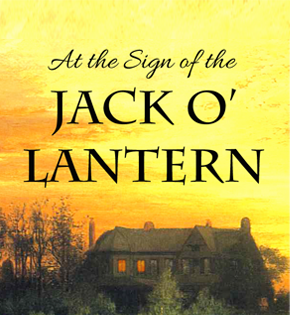The center of politics in the Lower East Side was Tammany Hall, which was both a place and an organization. Originally a patriotic "club" when founded in the 1700s, by the 1900s it was synonymous with political machination, corruption, and intrigue. For the two biggest gangs in the Lower East Side, support came from the Tammany Hall politicos. Immigrants were provided money and assistance with naturalization in exchange for their votes, and in the early 20th century, that meant an enormous voting population was easily bought. From the 1850s through the 1930s, Tammany Hall would essentially control New York City politics.
“Think what the people of New York are. One half, more than one half, are of foreign birth. They do not speak our language, they do not know our laws, they are the raw material with which we have to build up the state....there is no denying the service that Tammany has rendered the Republic. There is no other organization for taking hold of untrained, friendless men and converting them into citizens. Who else in the city would do it? There is not a mugwump who would shake their hand.” ~George Washington Plunkitt, "boss" with the Tammany Hall organization
With monetary support from politicians as well as a blind eye by police, the early 1900s saw a rise in ethnic gangs, including two notorious mobsters, Paul Kelly and Edward “Monk” Eastman. Paul Kelly, born Paolo Antonio Vaccarelli in Sicily, founded and ran the Five Points Gang. Working with the Irish-controlled Tammany Hall, Kelly and his gang blocked polls, assaulted the opposition, and committed numerous acts of voter fraud to guarantee reelection for their candidates in the early 1900s. The Eastman Gang, run by Edward "Monk" Eastman, was another notorious Tammany Hall criminal arm. He was known for, among other things, carrying a wooden club with a notch carved in the handle for every "bashed in head." Like Kelly’s Five Points Gang, Eastman’s gang worked to enforce Tammany Hall dictates--but neither gang could avoid antagonizing the other. Frequent gun battles would leave bystanders dead, and if corrupt police officers didn’t release the gangsters, corrupt judges would.
Eventually, in 1902, public outcry was so strong that the Tammany Hall machine tried to rein in their hired thugs. Attempting a gentleman’s agreement, a politician orchestrated a boxing match between Eastman and Kelly. The bout took place at a warehouse in the Bronx and was particularly grueling; after about two hours, a draw was finally called. Needless to say, no gentleman’s agreement nor boxing match could lead to complete control of the gangs, and by 1910, both Kelly and Eastman were no longer seen as influencers, even in their own gangs. Both were sentenced and served time in prison for crimes that they previously would have avoided, and their gangs were broken up by assassination attempts and infighting. Still, seeds were planted: Paul Kelly recruited young men who would use the 18th Amendment and the 1918 Volstead Act (which established Prohibition) to consolidate the money and power that would later give rise to the Italian Mafia. Eastman is considered to be one of the last of the 19th-century New York gangsters who preceded the rise of Arnold Rothstein and more sophisticated organized criminal enterprises.
 In The Prince and Betty, the fictional character of Bat Jarvis (who develops a crush on Betty) is believed to be loosely based on Monk Eastman (pictured above), and shares his kind-hearted affinity for animals. After serving several stints in jail and losing the support of Tammany Hall, Eastman joined the army at age 42 when the U.S. entered into World War I. When the doctor conducting his physical saw the knife and bullet scars on his body, he asked Eastman which wars he had been in, and Eastman replied, "Oh! A lot of little wars around New York." Eastman fought in France with the 27th Infantry. He survived the war, only to be killed by gang-related gunshot wounds in New York in 1920, and was buried with full military honors in Brooklyn, and a massive crowd of people turned out to pay their respects and line the route of his funeral procession.
In The Prince and Betty, the fictional character of Bat Jarvis (who develops a crush on Betty) is believed to be loosely based on Monk Eastman (pictured above), and shares his kind-hearted affinity for animals. After serving several stints in jail and losing the support of Tammany Hall, Eastman joined the army at age 42 when the U.S. entered into World War I. When the doctor conducting his physical saw the knife and bullet scars on his body, he asked Eastman which wars he had been in, and Eastman replied, "Oh! A lot of little wars around New York." Eastman fought in France with the 27th Infantry. He survived the war, only to be killed by gang-related gunshot wounds in New York in 1920, and was buried with full military honors in Brooklyn, and a massive crowd of people turned out to pay their respects and line the route of his funeral procession.Image credits: Tammany Hall, by Dr. Seuss, Five Points, Eastman Funeral
POSTED BY: Audra
The Prince and Betty by P.G. Wodehouse
Professionally edited and formatted for today's readers!
Get the Legacy Vintage Collection Enhanced eBook Edition for 99₵!
































